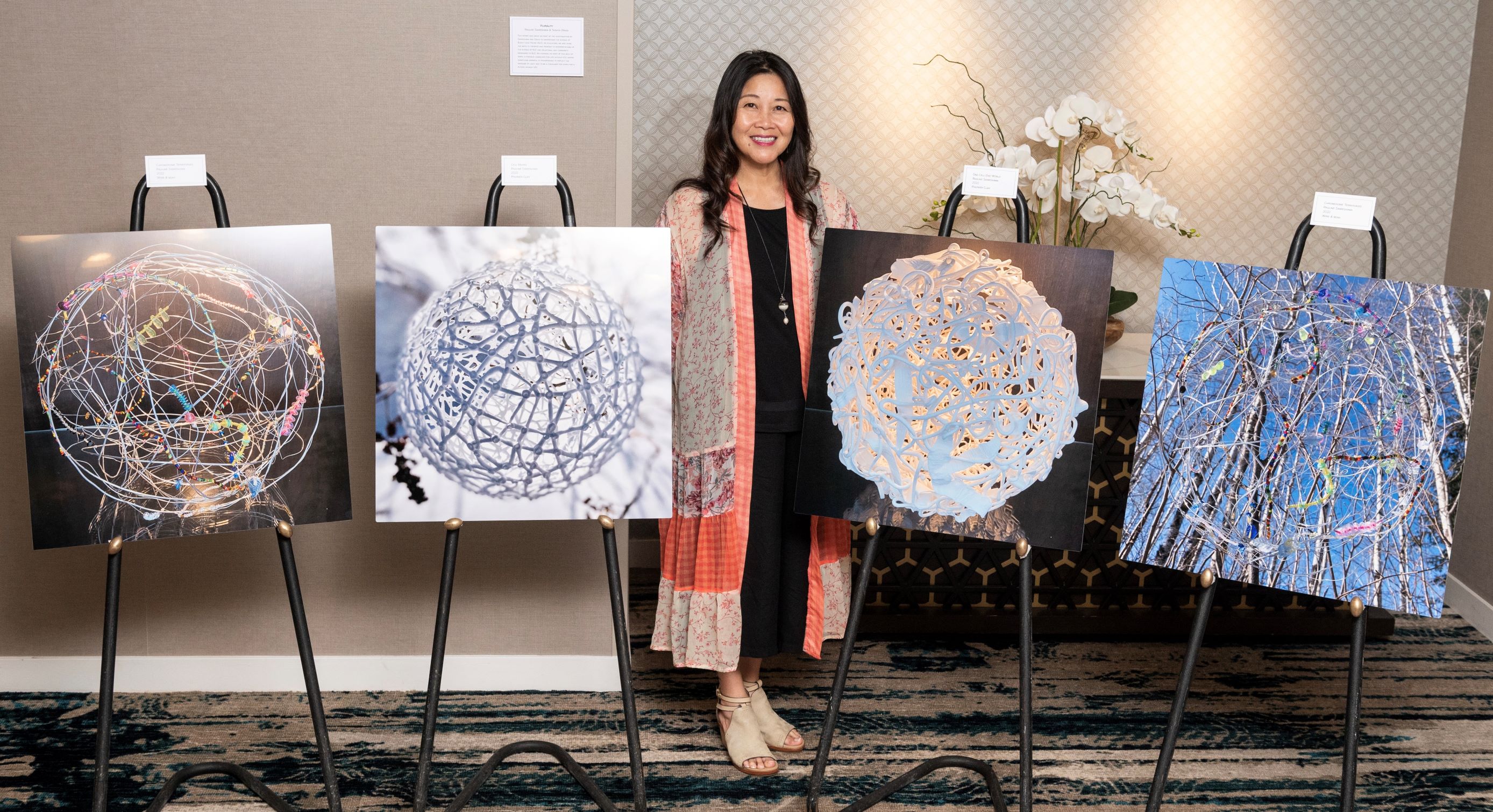Research in Action: Arts build HOPE and a bridge between science and public
Published in The Chronicle Journal Thursday, January 31, 2023.
BY JULIO HELENO GOMES
A world-wide effort to find a lasting cure for one of the biggest epidemics of the modern age is using art to help researchers understand how their work is being perceived and to engage the public in reaching their goal. One of the community engagement leaders is an award-winning Lakehead University professor who hopes such artworks will be on display in Thunder Bay, for Lakehead’s Research and Innovation Week, to shed light on research into HIV, the human immunodeficiency virus.
“I hope the exhibit will draw attention to the urgency we need to give to HIV,” says Dr. Pauline Sameshima, a professor in Lakehead's Faculty of Education. “It's a very pressing issue globally and we need to draw attention to HIV and the stigma still associated with people living with HIV.
“The project is exciting in that we can share research using the arts. We are in the second year of this grant and we have been very successful in creating conversations and dialogues amongst the scientists, communities and the artists.”
Sameshima is involved with the HOPE Collaboratory, a San Francisco-based US$26.5-million initiative trying a “block-lock-excise” approach to HIV treatment led by primary investigator Dr. Melanie Ott. The aim is to develop therapies that will not only stop the remnant HIV in a body from reproducing, but permanently get rid of it. This group includes researchers from 16 institutions and two pharmaceutical companies. HOPE is one of 10 Martin Delaney Collaboratories funded by the National Institutes of Health. There are currently 10 collaboratories based in the United States with international collaborators across the globe.
(More information on HOPE, the “HIV Obstruction by Programmed Epigenetics” collaboratory, is available at: https://hopeforhivcure.org/about/hope-collaboratory)
Many people can manage HIV, which can lead to AIDS, by taking a pill each day to essentially put it to sleep. HIV however, remains a significant health concern where barriers to access prevail, and in some countries it is a leading cause of death.
“It's a fatal virus for many in Africa,” Sameshima states.

A component of the HOPE Collaboratory is Community Arts Integrated Research (CAIR), which uses artworks to raise awareness of this complex endeavour and promote discussion.
Sameshima, who acts as educator and curriculum designer, leads the CAIR program, which includes interdisciplinary researchers and graduate students from Lakehead and Brazil. The team works closely with HOPE’s Community Advisory Board (advocates, ambassadors and People living with HIV) and Dr. Patricia Defechereux, HOPE’s Community Engagement Coordinator. The team’s highly collaborative structure is a key innovation that creates bridges between communities.
“We use the arts as a way to teach and learn about what the scientists are trying to figure out,” Sameshima explains. “We want to teach and involve the community in what is going on, so the community can advise the scientists, and the scientists can keep the community informed. We're using art as a communication between the two groups.”
Specifically, arts will help explain the “block-lock-excise” approach. An exhibit at Gladstone Institutes in San Francisco features sculptures and photography. Sameshima is planning an exhibit to coincide with Lakehead’s Research and Innovation Week activities in February, where local residents can see pieces that reflect the work of the collaboratory.
Tashya Orasi, a PhD candidate in Leadership & Policy in Educational Studies, is Sameshima's graduate assistant. She has presented her own art and was co-lead on an community art-making session at the HOPE annual meeting in September involving scientists and community members. Raif Derazzi, HOPE’s Community Advisory Board’s Co-Chair, interviewed scientists at this event. See the interviews here: https://youtu.be/NiZrtkSZx1c
“As an artist, teacher and researcher, this experience working across disciplines with HIV scientists and community members, alongside Dr. Sameshima, has been invaluable to my future career as an educational researcher,” Orasi says.
As part of her graduate assistantship, Orasi is also gallery coordinator of the LAIR galleries, spaces on campus where items curated by Sameshima and guest jurors can be viewed. (More information on LAIR, the Lakehead Arts Integrated Research Galleries, is available at: https://galleries.lakeheadu.ca)
This project has been a learning experience for Sameshima. She spent 17 years as a classroom teacher before earning a PhD in curriculum studies, and working at Washington State University before joining Lakehead a decade ago.
“My focus is really on education, not science,” says Sameshima, who was recently recognized as the Ontario Art Education Association's Post-Secondary Teacher of the Year.
Along with the Lakehead University's Research and Innovation Week activities (February 27 to March 2, 2023) displays, Sameshima also hopes this summer's C2U Expo <https://ec.lakeheadu.ca/c2uexpo/welcome>, which seeks to strengthen community-campus research and learning partnerships, will host a panel of HOPE participants and other researchers to discuss the multi-pronged search for HIV cures.
“There are a lot of things on the go,” Sameshima notes. “And, yes, we would like to expand and grow this project within our own community.”
Research in Action highlights the work of Lakehead University in various fields of research.

